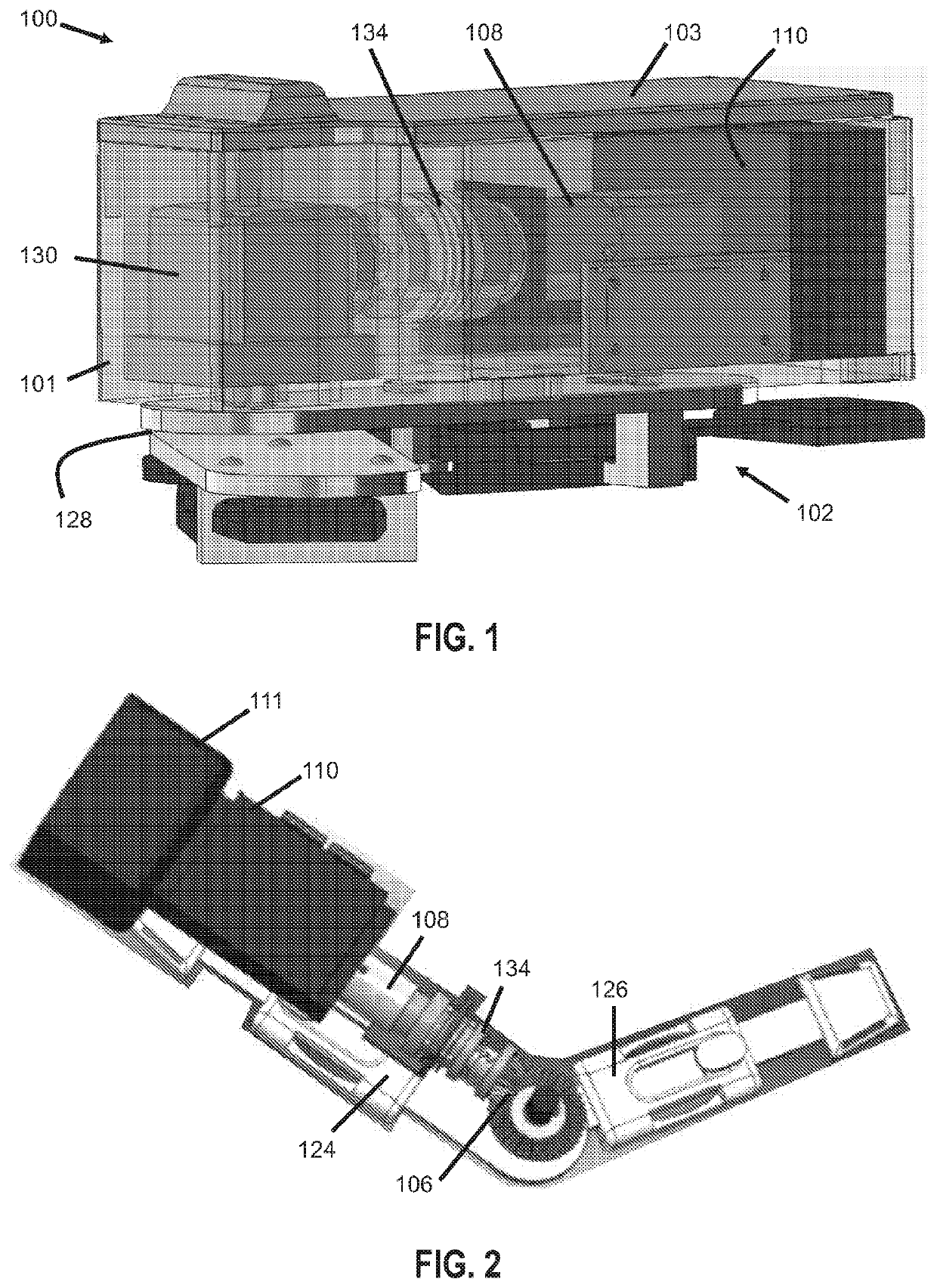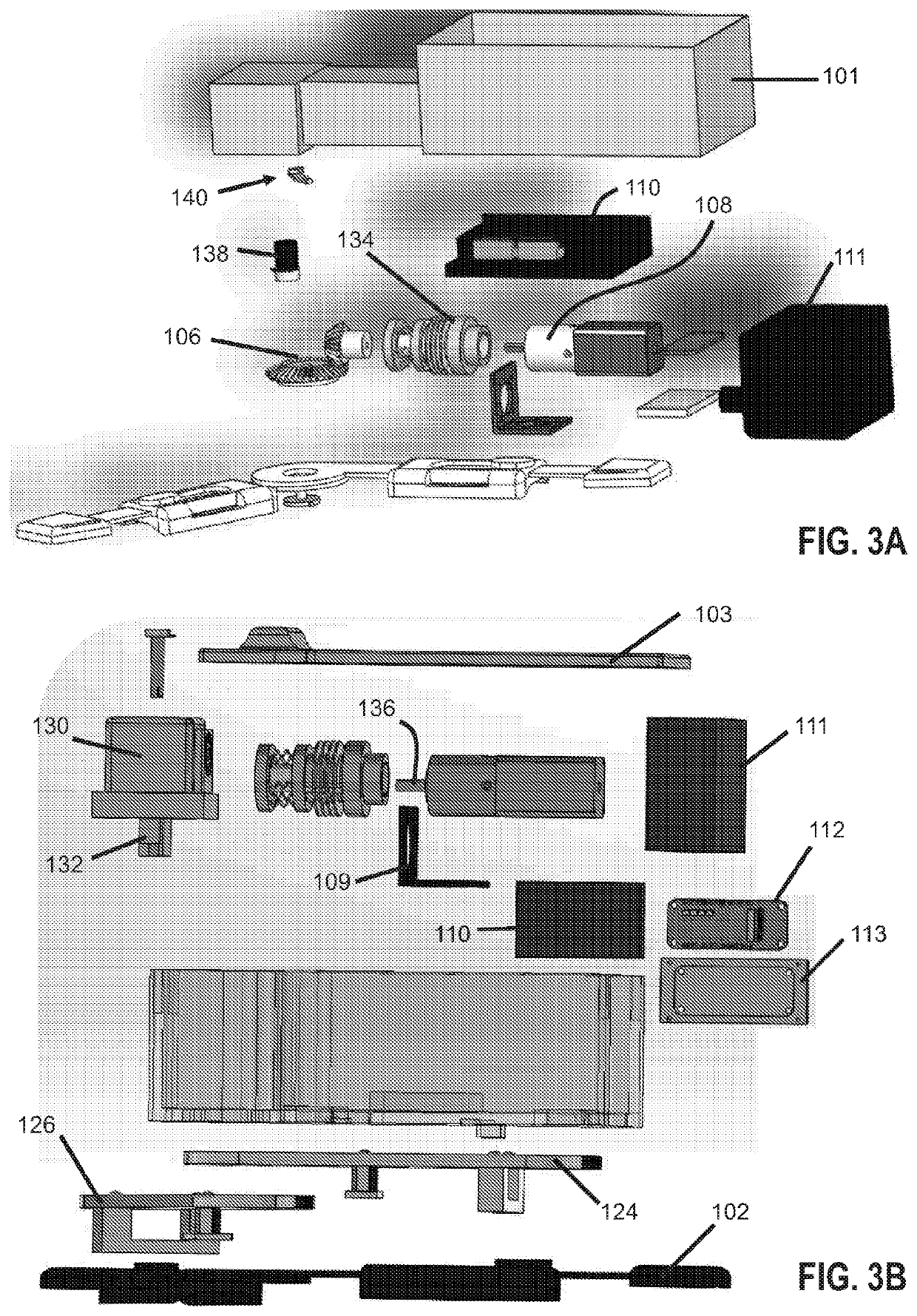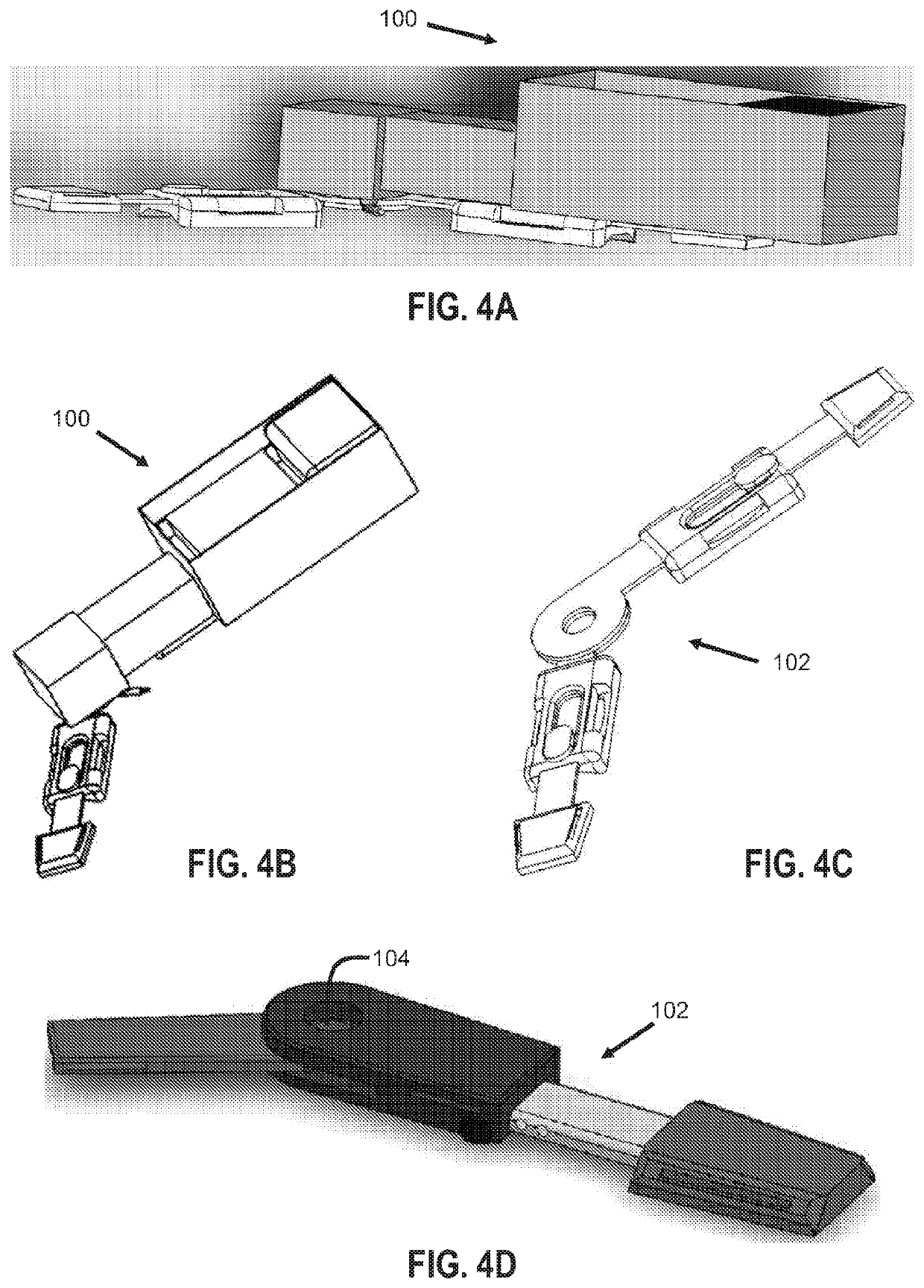Active assist orthotic
a technology of active assist and orthotics, applied in the field of orthotics, can solve the problems of joint stiffness, ineffectiveness, and pain in exercises, and achieve the effects of reducing the apparent weight of the orthotic, less apparent weight, and more evenly distributed device weigh
- Summary
- Abstract
- Description
- Claims
- Application Information
AI Technical Summary
Benefits of technology
Problems solved by technology
Method used
Image
Examples
example
[0093]Without wishing to limit the present invention to any particular embodiment, the following is a description of example components comprising the active assist elbow orthotic of the present invention. Equivalents or substitutes are within the scope of the invention.
[0094]In preferred embodiments, the motor-hinged elbow orthotic can maintain as much range of motion in the joint throughout a healing process while also breaking down the scar tissue in the joint. The device can aid recovery after surgery and has the advantage over physical therapy of being wearable and user controllable. While performing the flexion / extension movement in the arm, the orthotic can actively assist the patient into moving the arm to a predetermined angle as prescribed by a physician.
[0095]In one embodiment, the active assist elbow orthotic system is broken up into two main distinctions: the arm brace including the mechanical and electrical components and the display interface (118), herein referred to...
PUM
 Login to View More
Login to View More Abstract
Description
Claims
Application Information
 Login to View More
Login to View More - R&D
- Intellectual Property
- Life Sciences
- Materials
- Tech Scout
- Unparalleled Data Quality
- Higher Quality Content
- 60% Fewer Hallucinations
Browse by: Latest US Patents, China's latest patents, Technical Efficacy Thesaurus, Application Domain, Technology Topic, Popular Technical Reports.
© 2025 PatSnap. All rights reserved.Legal|Privacy policy|Modern Slavery Act Transparency Statement|Sitemap|About US| Contact US: help@patsnap.com



